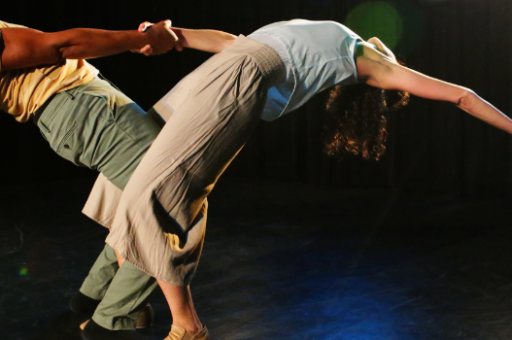Nancy Isenberg (CBA ’17), professor of English Literature at the Università di Roma Tre until her recent retirement, has worked at the State Archives in Florence reconstructing flood-damaged manuscript collections, covered feminist issues as a journalist, collaborated with the Rome Opera House publications department, and been active in international scholarly projects, networks, and associations. Currently, she divides her research interests between women writers in European cultural history and connections between Shakespeare and ballet. She has published studies on dance in Shakespeare’s world and works, ballet appropriations of Romeo and Juliet, Taming of the Shrew, Hamlet and Othello, and most recently, the chapter on “Ballet” in the Cambridge Guide to Shakespeare’s Worlds (2016). Her work on literary ballets outside the Shakespeare canon includes ballet appropriations of Bram Stoker’s Dracula, Virginia Woolf’s Orlando and the fairy tale Cinderella.
For more about Isenberg’s CBA Fellowship, visit her fellow page.
What is the primary focus of your work as a CBA Fellow?
My work here at CBA primarily involves reshaping previously published articles so they work coherently as the chapters of a volume specifically dedicated to Shakespeare and Ballet. It also involves writing a few still missing chapters.
How did you become interested in the intersection of Shakespeare and ballet?
This intersection represents a happy marriage of two passions. A friend was the matchmaker.
It started many years ago when the Rome Opera House was looking for someone to write a piece about Shakespeare and the ballet Romeo and Juliet and he gave them my name. This led to a series of articles commissioned by the Opera House which in turn became the basis for my bringing ballet into my university research and teaching.
Could you elaborate on the connection between Shakespeare and ballet?
Nearly every one of Shakespeare’s works has been reworked into a ballet, and some of them, like Romeo and Juliet, have been choreographed numerous times. Shakespeare ballets are in the repertoire of most ballet companies throughout the world.
At the same time, in the vast cultural universe of Shakespeare’s legacy, there is no other artistic medium or narrative genre (opera, musical, cinema, comics, cartoons, songs, music scores, prose fiction, etc.) where his works have contributed as abundantly and repeatedly. And I dare say Shakespeare has contributed more source material to the world of ballet (if we count all the different choreographies based on each of his works) than any other artist. So, there are definitively objectively quantifiable connections.
But there are connections at other levels as well, such as the shared conventions and characteristics that have defined both these narrative stage genres since their beginnings in the same historic period. Examples are the disencumbered stage, the organization of the narrative into episodes, the wealth of characters from all walks of life, to name only a few.
On another level, we can find connections between Shakespearean characters and some of the traditional character types of the ballet stage. There are echoes of Juliet and Ophelia in tragic ballet heroines like Giselle and White Swan who in turn echo in later performances of Juliet and Ophelia. The same thing happens with Romeo and Hamlet and ballet’s danseur noble roles. Tybalt who struck Mercutio from behind is somewhere in the shadows of ballet’s villain roles like Rothbart. And I could go on here.
Why are choreographers so drawn to creating ballets based on Shakespeare?
This is the Big Question, and the one that has informed my work since the beginning.
I think all the connections I just mentioned contribute to the attraction and facilitate the accommodation of Shakespeare’s works to the dance stage. But as I see it, what initiates the attraction, along with character types, has mostly to do with story content, and universal themes, and the way through the combination of these elements, Shakespeare’s works can always be read in relation to the here and now, helping us recognize, interrogate and reflect on challenging issues in our times. Ballets can do the same thing, and without the weight of words they can cut straight to the heart of the matter in ways not possible on the dramatic stage. Each of the case studies I’ve worked on so far tries to give these notions substance through concrete interpretative examples.
What methodology will you use to pursue this project?
The methodology like the topic itself is intersectional, combining the work done from a cultural perspective in the areas of Shakespeare-in-performance studies and dance studies. So, it uses the lenses of cultural identity (gender, sexuality, race, ethnicity, class), along with those related to private and public relationships, both collective and individual, and it applies them to elements of plot, character, casting choices, choreographies, choreographers’ and dancers’ personal identities and histories, and any other identifiable element that may have contributed to informing a specific performance with a specific cast, in a specific time and place. The underlying principle is that multiple perspectives produce fuller, more complex and nuanced meaningfulness – also because they incorporate contradictions. Meaningfulness which incorporates contradictions, after all, is at the core of Shakespeare’s work and his enduring legacy.




